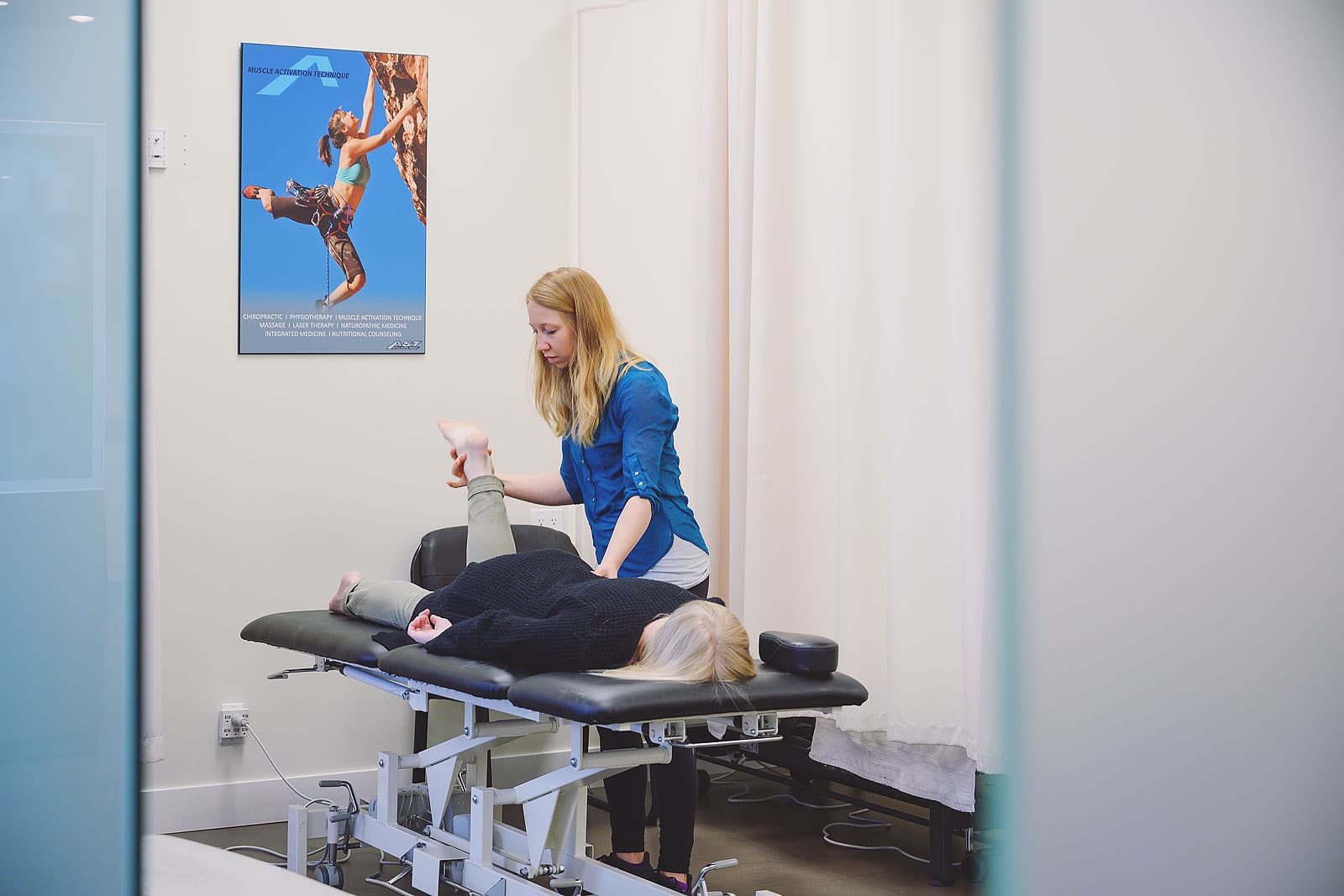Written by: Sarah Kuindersma, M.A.T. Specialist
Muscles power everything that we do. From getting out of bed to walking our pets, to doing house chores. All things we want to continue to do even as we age. Our muscle function is impacted by a number of different things. The common denominator is when too much stress is placed, thereby negatively impacting our body’s ability to contract and use our muscles efficiently. Examples: Diseases (ALS), illness. aging, over/underuse, injuries, surgeries, dehydration, etc.
When this communication from the brain to our muscles gets impaired how do we correct it?
This is where Muscle Activation Techniques or M.A.T. comes in.
What are Muscle Activation Techniques?
I prefer to say it in reverse. M.A.T. are techniques used to activate muscles. The key to muscle function is its ability to contract and generate force. If your brain is effectively communicating to all your muscles to do a job the task feels easy.
Picture the last time you moved. Moving a house alone or with a few friends is a daunting task, but if you had 50 movers the task would feel easy. Let’s replace moving a house with moving your body. There are about 600 muscles in the human body, imagine going from 600 workers to 300 workers. Daily tasks would feel daunting. M.A.T. techniques too.
activate muscles do just that, it activates or recruits muscles to perform their specific task making moving your body feel easy.
M.A.T. works in 3 simple steps
Step 1: Assess your current movement, the first step is to assess where the limitations are. M.A.T. practitioners do this by watching you move in a variety of different ways. Making notes of any ranges that seem impaired.
Step 2: Activating the muscles, when there is a limit in range, it signifies at least one or more muscles that perform that action aren’t receiving the signal from the brain to contract. M.A.T. can restore this communication by manually placing pressure at the muscle attachment sites. The practitioner will repeat this process for every muscle involved with the limited movement pattern. Sometimes specific exercises are given to help coordinate the movement pattern again.
Step 3: Re-evaluate, after working on the muscles, it’s time to go back a re-assess what the limited movement pattern looks like now.
Video explaining what M.A.T. is: https://youtu.be/0-Km1EWiSrw
Who would benefit from M.A.T.?
Our goal is to help you get back to your healthy, active lifestyle while remaining pain-free. The better you move the better you feel.
If you are someone wanting to improve their performance – Not just with sports but this applies to musicians and artists too. No matter what you enjoy doing, if you spend a significant time repeating an action it will have a cost at your body’s expense. You’ll need to restore your muscle function, otherwise, it could lead to imbalances and vulnerability to injuries.
If you are someone wanting to age gracefully and with mobility – I hear this all too commonly, individuals blame their age for how they feel or move or are unable to do (insert comment here, ex. Climb a mountain). The fact our age does have an effect on our bodies, however, we usually are saying it is our age causing our bodies mobility issues, pain and stiffness, with M.A.T. you can build a strong and stable foundation to get you back to what moves you.
If you’re someone who has tried everything – M.A.T. can’t cure everything, but you’ve eliminated a lot of different reasons why your body isn’t working optimally so the chances it’s just a matter of getting the muscles working more efficiently is a lot more likely.
Want to experience how M.A.T. can make a difference in your life?
Call 4032781405 and book with Sarah Kuindersma at Active Sports Therapy today.
http://www.activesportstherapy.ca



